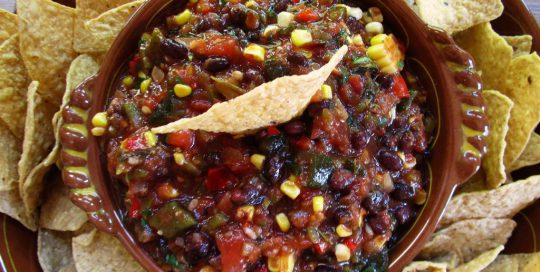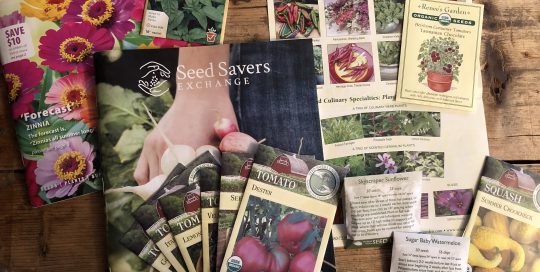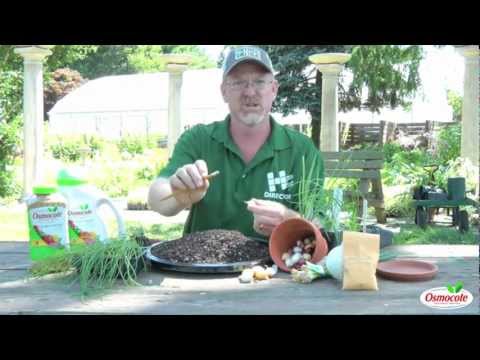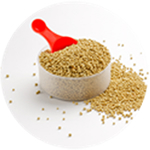Growing peppers for the table is easy and fun. It gives you more options in food preparation, too. You can start with seeds or seedlings.
Each year I plant a small kitchen garden with herbs and veggies. I look forward to harvesting the produce throughout spring, across summer and into early fall. The cast of characters may change a bit from year-to-year — you know, a new variety of radish or a cleverly named heirloom tomato. But there are a few mainstays I just can’t do without. Basil and tomatoes, for example, for my fresh Caprese salads, cucumbers for snacking, and mint for teas and cocktail hour. Most necessary, of course, are the peppers.
They are downright fun to have on hand because they are so versatile. Think stuffed peppers or peppers for pizzas and fajitas. Peppers are a key ingredient in homemade salsas. Easy to grow, peppers are chock full of nutritious health benefits. Peppers are a flavorful addition to a wide variety of meals. They can range from sweet to spicy to downright hot!
Where to Grow Peppers for the Table
Choosing the best spot in the garden for your peppers is the first, and arguably, the most important step. Soil should be rich, well-drained, and in a sunny spot. I prefer to plant my peppers where they will get 6-8 hours of direct sun per day. Peppers prefer a loamy soil. That just means soil that is roughly equal parts silt, sand and clay. If you don’t happen to come by the ideal growing medium naturally, you can amend the soil with compost or other organic matter.
Avoid working in too much nitrogen. That can result in fast-growing leafy plants that don’t produce the large healthy fruit you’re after. Peppers are members of the nightshade family of plants which includes tomatoes, eggplants and potatoes. Make sure the spot you select wasn’t used to grow any other members of the “family” in the past couple of seasons. Otherwise you risk introducing your plants to disease.
Growing Peppers from Seeds
If you are starting your peppers from seeds, plant indoors 8-10 weeks before your area’s last frost date. Peppers have a fairly long growing season, 60-90 days. By starting indoors with grow lights or in a sunny windowsill you’ll give your peppers a good head-start. You may ask, “Why start peppers from seeds at all?” Well, for one thing, starting your plants from seeds is economical. Also, the variety of plants available as seeds is much greater than the few types of seedlings on offer at your local nursery or garden center.
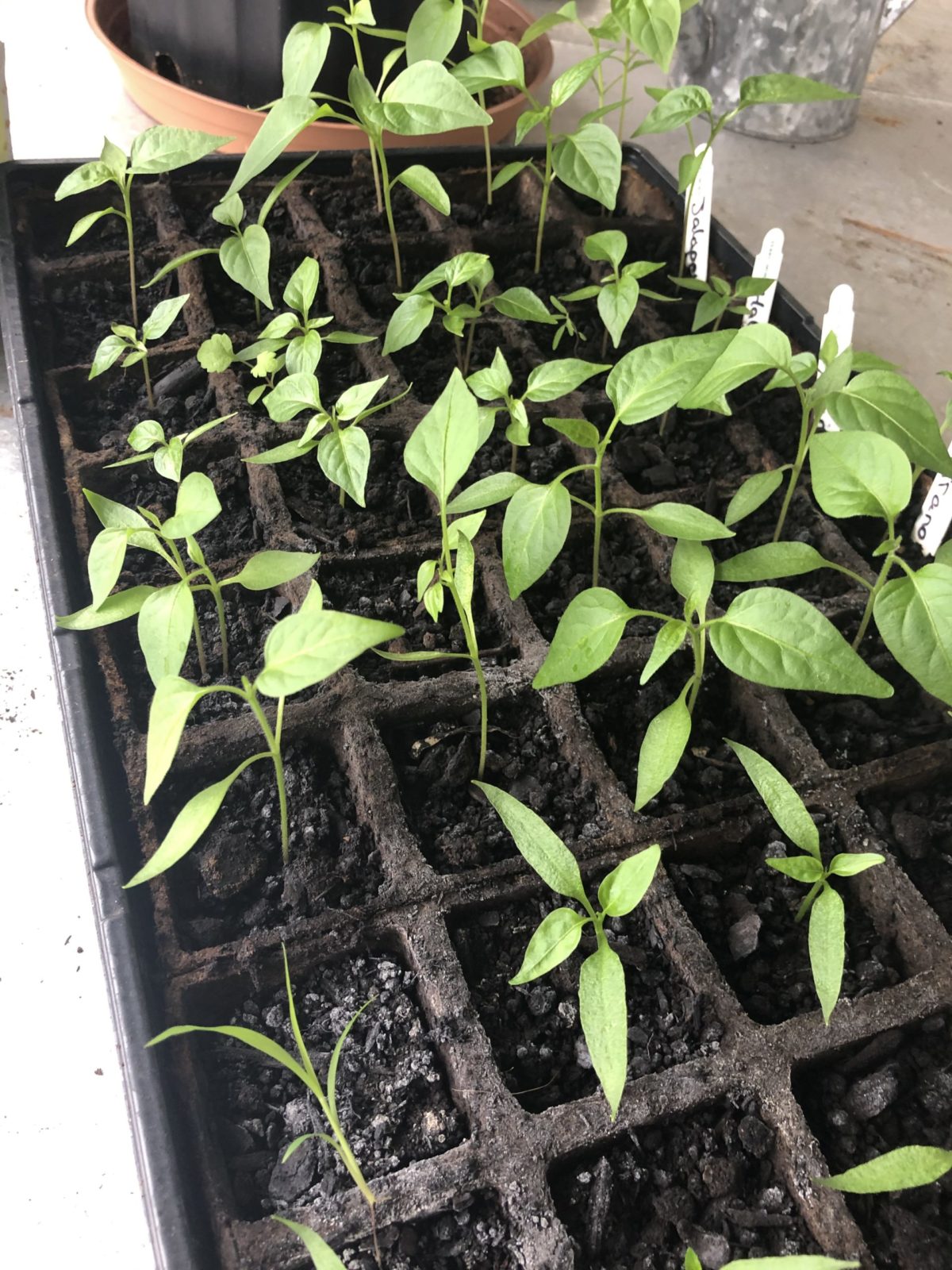
Pepper seedlings – photo by Sarah Marcheschi
Transitioning the Seedlings Outdoors
About 7-10 days before transplanting your seedlings, ‘harden’ them by exposing them to the great outdoors. Plants with a bit of experience outdoors will adjust better to the change. Once temperatures are in the 60’s during the day, place seedlings outside for a few hours in a sheltered location. Be sure to bring then inside each night. Extend the outside time as the days go on, until you are finally able to plant them in the ground. Peppers like warm weather, so wait until all danger of frost has passed, and nighttime temps are reliably in the 60’s. Space plants 18-24 inches apart, depending on the variety, and water immediately after planting. Taller varieties can be staked or caged to prevent stems from breaking in high winds or under the weight of heavy fruits. Water plants regularly throughout the growing season.
Maximizing the Output When Growing Peppers for the Table
When you first see little blooms on your pepper plants, brace yourself and pinch them right off. It’s counterintuitive, I know. But, this tells the pepper plants to put all their energy into growing and producing fruit, Honestly, you’ll end up with a better harvest later on in the season. By mid-late summer your peppers should be ripe for the picking. Harvest sweet bell peppers when they’re young and green. Allowing them to mature on the vine, instead, will give you red, or sometimes yellow or orange fruit. And, a sweeter flavor. Harvest jalapenos while still green because the flavor is better. When it’s time to harvest, simply snip the peppers off the plant with a set of pruners. Do not pull them directly from the plant! It will likely result in damage that will shorten the plant’s productive period.
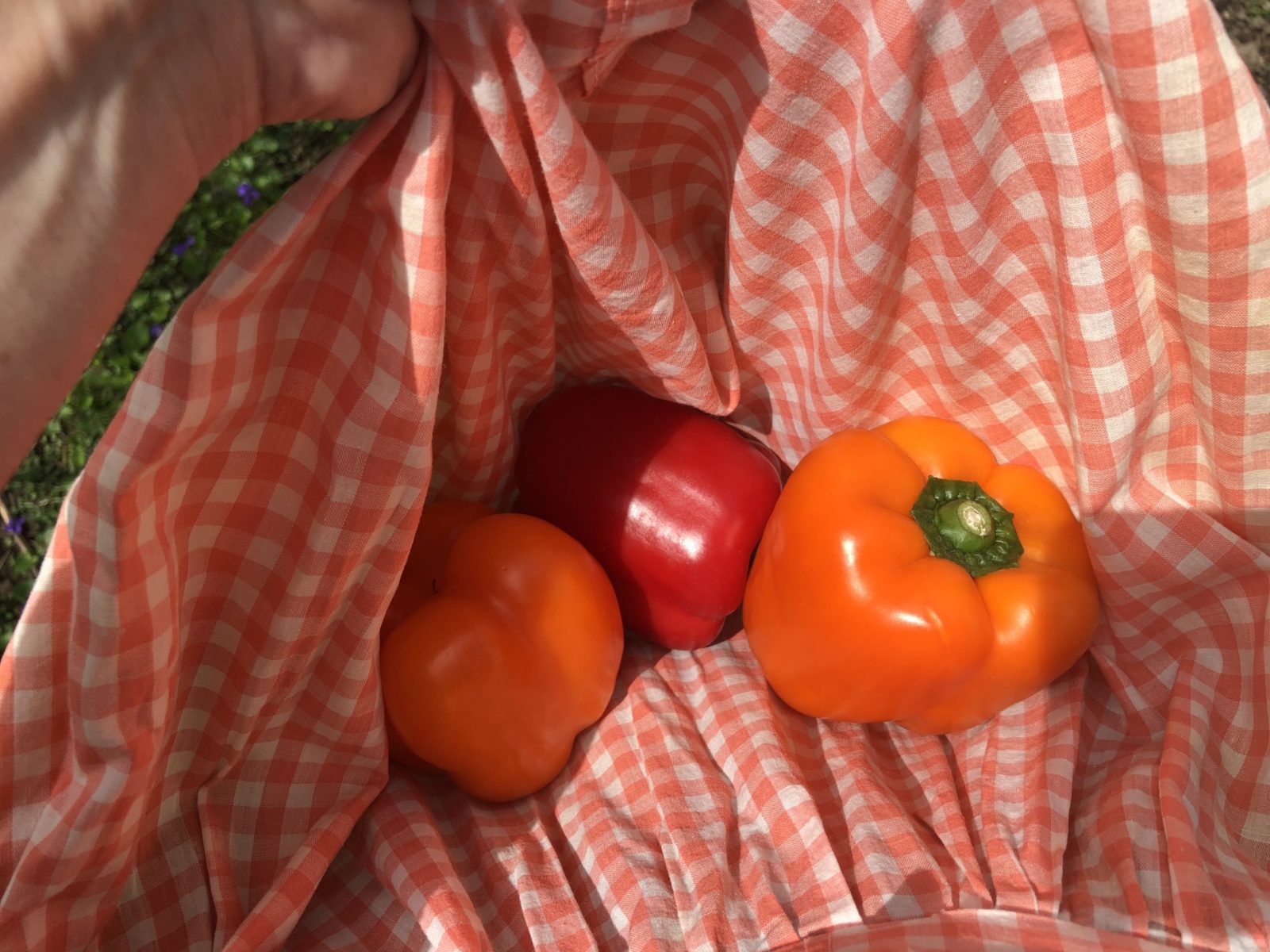
Peppers Ready for the Table – photo by Sarah Marcheschi
Choosing the Right Variety of Peppers
When it comes to growing peppers in your home garden, there is an almost endless plethora of plants to choose from. Following are some easy to grow varieties for cooks.
- Habanero Pepper: Don’t be fooled by their cute little size and wrinkly orange skin, Habanero peppers can be seriously spicy! They also have a sweetness that lends itself well to fresh salsas and salads. Cooking them will temper the heat and coax out the sweet flavor even more.
- Poblano Pepper: The dark green Poblano pepper is one of the largest, and easiest, cultivars to grow. Their milder flavor makes them a good choice for chiles rellenos, fajitas, sauces, soups, and even omelets.
- Jalapeno Pepper: Jalapeno peppers are quick and easy to grow, and to use- they’re popular stuffed, pickled, roasted, even jellied, and good on or in everything from sandwiches to tacos to stews. And of course, they’re delicious wrapped in bacon. As mentioned above, jalapenos can be harvested when they’re still young and green, or left on the vine to mature until they turn red and develop a mellower flavor.
- Thai Chili Pepper: Thai chili peppers are tiny, but powerful- one of the hottest varieties used in cooking! They’re also a great choice for apartment-dwellers as they can easily be grown in pots on a sunny terrace, or for the small space garden.
- Bell Pepper: Also known as sweet peppers, these versatile veggies are popular in dishes ranging from sautes to salads. They’re good on pizzas, on the grill, roasted, stuffed, stir-fried, steamed, and they’re delicious eaten raw- and full of vitamin C as well!
Whichever variety – or varieties – you choose, you won’t regret making a little extra room for pepper plants in the veggie patch. Kids and grown-ups alike feel a sense of satisfaction and accomplishment because growing peppers for the table is fun and easy.

